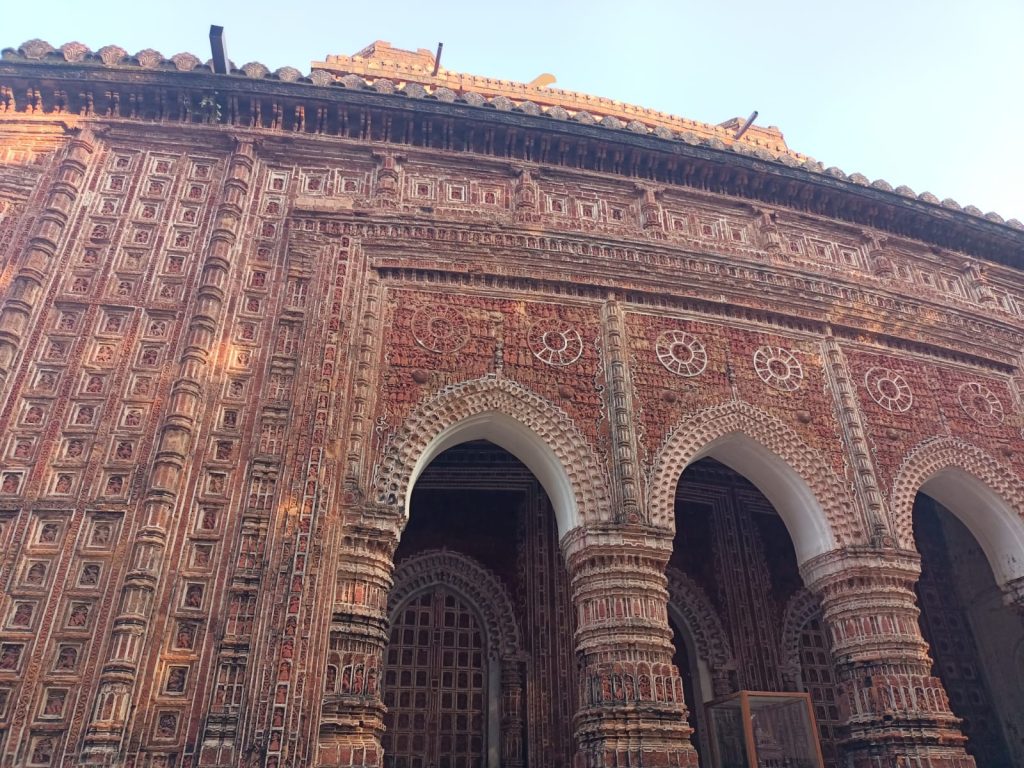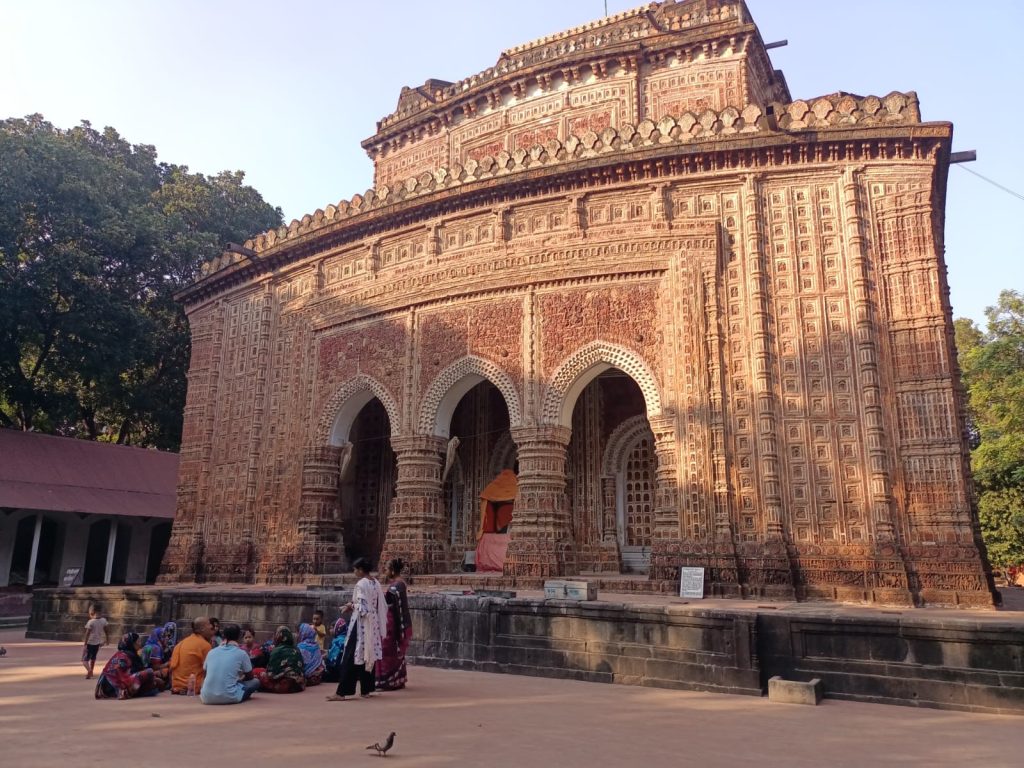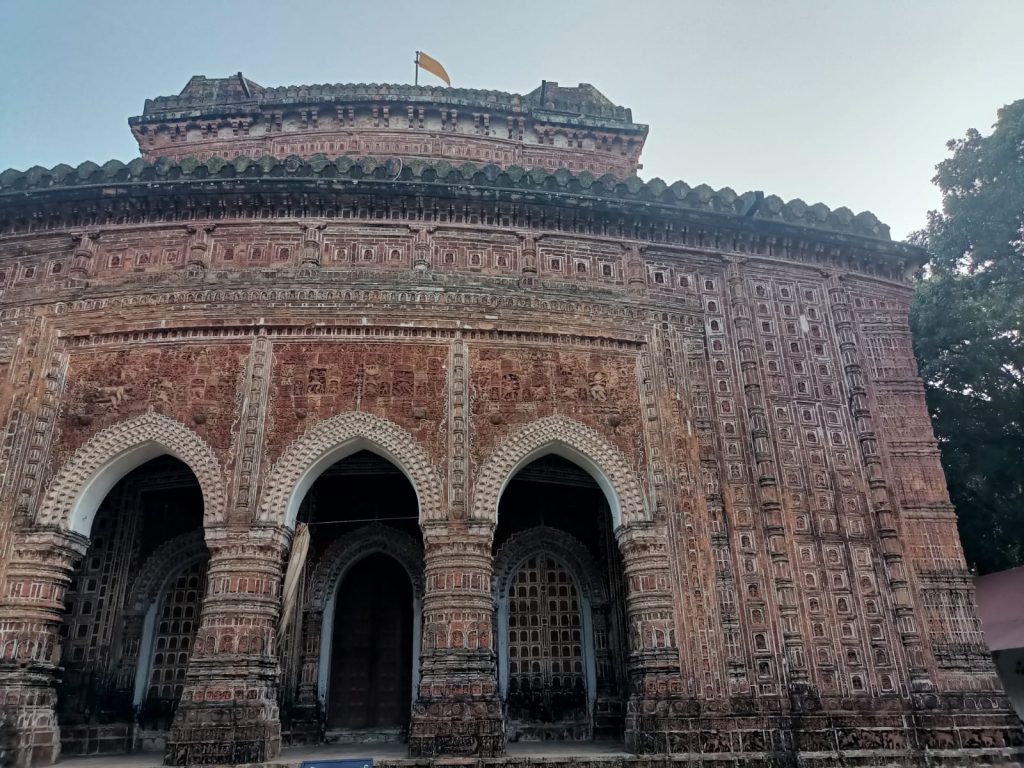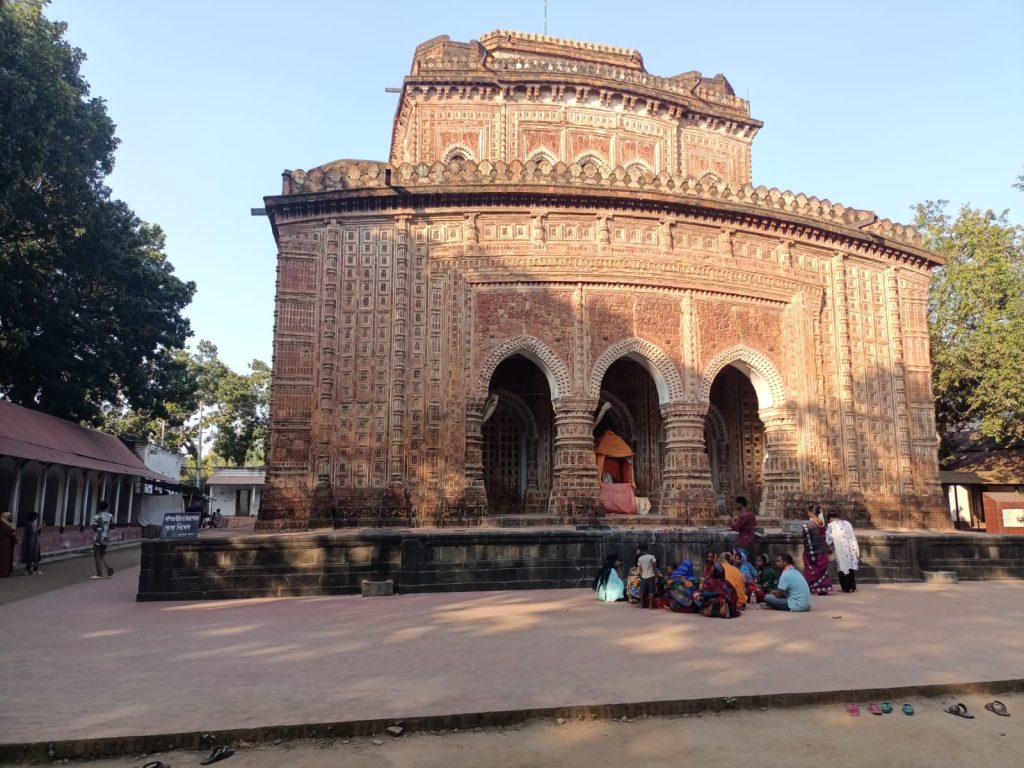A trip to Kantaji Temple
Anika Chowdhury
Dinajpur’s weather dances with the changing seasons, each bringing its own unique charm. I visited Kantanagar on a rainy day and was grateful not to have encountered the hot and humid breeze of summer. Kantaji Temple is dedicated to Lord Krishna and due to the presence of the temple, everyone calls the town Kantanagar. And this is how this magnificent temple has been endowed with its other name Kantanagar Temple.
The locality of Kantanagar is a living tapestry woven with threads of history, tradition, and warm hospitality. The town is dotted with architectural gems, and the Kantaji Temple stands as a testament to the region’s rich cultural heritage.

As I stood before the resplendent Kantaji Temple, I was awestruck by its grandeur and the stories etched in its terracotta façade, transporting me into an atmosphere that transcends centuries. This architectural marvel was built by Maharaja Pran Nath in the early 18th century – still standing gloriously as a testament to the rich cultural heritage of Bangladesh.
The construction of Kantaji Temple commenced in 1704 CE and was completed during the reign of Maharaja Pran Nath’s son. The temple is a symbol of devotion to Lord Krishna and his consort Rukmini, with intricate carvings depicting episodes from Hindu mythology. The architecture is a symphony of terracotta, each panel portraying scenes from Hindu mythology with meticulous details.

Approximately 15,000 stunning terracotta works are installed on the walls of the temple. As the sun sets, the warm hues of the terracotta come alive, casting an ethereal glow that adds to the temple’s mystique. It’s not just a monument; it’s a living witness to the artistry of a bygone era. The terracotta panels depict the tales of Ramayana and the Mahabharata, while some tell the stories of the Mughal emperors.
Its pyramidal structure, adorned with nine ornamental spires, resonates with the spiritual essence of Bengal. The ancient bricks, weathered by time, create an intricate mosaic that tells the story of craftsmanship and dedication. The gentle breeze carries echoes of chants as if the very air resonates with the prayers of countless pilgrims who have tread these hallowed grounds.
Kantaji Temple lights up amid a euphoric mood during the historic Rash Mela, which is held on the premises of the temple. As the sun dips below the horizon, the enchanting aura of Kantaji Temple comes alive during the Rash Mela. This traditional religious festival, a vibrant celebration of the Hindu community, unfolds its splendor in the presence of thousands of devotees.

The Rash Mela, a 500-year-old festival, transforms the temple premises into a kaleidoscope of colors and devotion. Pilgrims and visitors alike gather to pay homage to the divine amidst the ornate terracotta relics of Kantaji Temple. The air resonates with the sounds of hymns and the aroma of incense, creating an ethereal atmosphere that transcends time.
Situated about 20 kilometres north of Dinajpur, Kantanagar offers a serene escape from the hustle and bustle of city life. As I strolled through the town, I was captivated by the simplicity of life here. The Dinajpur-Tetulia highway leads to this haven, isolated by the Dhepa River, creating a tranquil atmosphere that adds to the temple’s mystique.
Exploring the surroundings, I stumbled upon hidden gems: ruins of a Shiv Temple and a Dighi, which is now filled up. Truly, the sprawling temple grounds, adorned with ancient trees provide a peaceful refuge to any weary traveller. Sitting by the temple pond, I found solace in the quietude, interrupted only by the occasional rustle of leaves and the distant sounds of temple bells.
For those seeking tranquillity, the temple complex offers a retreat into nature’s embrace. Visitors can take leisurely strolls, meditate in secluded corners, or simply soak in the ambience. Kantaji Temple is not just a cultural landmark; it’s a sanctuary for those seeking moments of introspection and calm.

Travel notes
Start your trip by planning your journey to Dinajpur. Whether you choose to travel by road or rail, ensure you have a clear itinerary to make the most of your visit. Dinajpur offers a range of accommodation options to suit various budgets. So, research and book your stay in advance if you’re planning to stay overnight.
Once in Dinajpur, arrange transportation to Kantaji Temple. Local taxis, rickshaws, or rented vehicles are readily available for the approximately 20km journey to Kantanagar village. Kantaji Temple welcomes visitors without an entrance fee. However, being a religious site, it’s essential to respect local customs and traditions during your visit.
Upon arrival, take your time to explore the intricate terracotta carvings and the historical significance of the temple. And don’t forget your camera! The stunning architecture and scenic surroundings offer numerous photo opportunities. Capture the essence of Kantaji Temple to cherish the memories of your visit.
- mwhttps://mansworldbangladesh.com/author/mw/
- mwhttps://mansworldbangladesh.com/author/mw/
- mwhttps://mansworldbangladesh.com/author/mw/
- mwhttps://mansworldbangladesh.com/author/mw/













